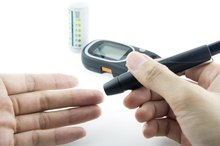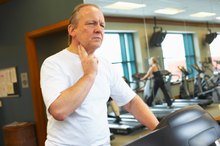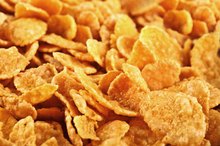Human Metabolism & the Krebs Cycle
Energy is required by the human body for everything from breathing and circulation, to running and weightlifting. The body produce energy through chemical processes that take place within our cells. This is metabolism. According to Anatographica‘s “Digital Atlas of Human Anatomy,“ metabolism is the sum of all physical and chemical processes that occur in the body, building up or breaking down substances 1. Metabolism uses different metabolic pathways, including the Krebs cycle, for energy production. The body utilizes three main metabolic pathways, the ATP/CP pathway, glycolytic pathway and the Krebs cycle.
Metabolic Pathways
Your body has different needs for energy. There are times when a quick burst of maximum energy is required, perhaps for only a minute or less. Short term needs use anaerobic energy, which means without oxygen. During times when you need your energy to last, such as during aerobic activities, you need oxygen. The metabolic pathway utilized for energy production will depend on your energy needs.
The ATP/CP and glycolytic pathways will be used only during anaerobic activity. Anaerobic exercise includes quick bouts of activity, such as weightlifting or sprinting, when oxygen is not needed due to the short duration of the energy requirement. During aerobic or endurance events, such as distance running, when oxygen is being utilized, your body will use the Krebs cycle for energy production.
- Your body has different needs for energy.
- During aerobic or endurance events, such as distance running, when oxygen is being utilized, your body will use the Krebs cycle for energy production.
The Krebs Cycle
Carbohydrates Burned During Exercises
Learn More
The Krebs cycle is the slowest working metabolic pathway for energy production. However, it allows the body to maintain its energy level during endurance activities. The Krebs cycle allows the body to sustain long-term energy because it produces more energy than the other pathways. The Krebs cycle using enzymes helps set it apart from the other metabolic pathways.
- The Krebs cycle is the slowest working metabolic pathway for energy production.
- The Krebs cycle allows the body to sustain long-term energy because it produces more energy than the other pathways.
Nutrition and the Krebs Cycle
Metabolism describes the processes that direct energy from the food you eat into fueling normal growth, development and physical activity.The Krebs cycle is is the only metabolic pathway to burn fat in addition to carbohydrates and protein for energy production. The Krebs cycle is the only way that fat gets used in this energy production, but this does not last forever. The more time that you exercise, the more that energy is used and the body will switch from burning fat to carbohydrates for energy.
Location of the Krebs Cycle
Decrease in pH of Blood Caused by Exercise
Learn More
The mitochondria are the parts within the cells that convert protein, carbohydrates and fat into energy. About 95 percent of the body’s energy is produced by the mitochondria. Consequently, from inside the cells, the human metabolism utilizes one of the metabolic pathways, such as the Krebs cycle, to turn food into energy.
Related Articles
References
- "Digital Atlas of Human Anatomy", Anatographica, 2007
- "How the Body Works", Dr. Peter Abrahams, 2007
Resources
- "Nutrition: The Complete Guide", John Berardi PhD and Ryan Andrews MS/MA, RD, 2009
- "The New Glucose Revolution for Diabetes", Dr. Jennie Brand-Miller, et al.; 2007
- "Fitness: The Complete Guide, Frederick C. Hatfield, 2008
Writer Bio
Natalie Woodhurst is a U.S. Air Force Veteran, former mental-health professional and ISSA Nationally Certified Fitness Trainer who began writing in 2010. Her enthusiasm for fitness and entertainment comes through when writing for various websites. Woodhurst is currently continuing her education in performance nutrition and fitness therapy.








